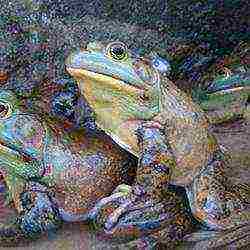Content
- 1 How and where allspice black peppercorns grow
- 2 Is it possible and how to grow a plant at home?
- 3 Where to plant, where to get the seed
- 4 Which soil to choose
- 5 Growing and caring for the home
- 6 Possible difficulties
- 7 Little cultivation tricks
- 8 Beneficial features
- 9 From personal cultivation experience
- 10 Growing black pepper at home
- 11 Further care of the plant
- 12 Preparation of soil constituents
- 13 Reproduction of black pepper and errors that are possible when cultivating a plant
Black pepper, as a spice, has been known to mankind since time immemorial.... Neither the first nor the second courses can do without its aroma and flavor-adding pungency, and delicious marinades cannot be prepared without the well-known black peas. But not everyone knows how this well-known spice grows - black peppercorns. Recently, the cultivation of black pepper in the summer cottage and at home has become more and more popular, so I want to answer in detail all the questions that arise.
How and where allspice black peppercorns grow
The homeland of the spice is the subtropics of Asia. Plantations of "Malabar berry", this is another name for black pepper, are located in India, Brazil, Indonesia.
In natural habitat, it is a perennial tree-like liana, entwining tree trunks.
Pepper vine grows up to 15 meters tall with large leathery leaves and hanging clusters of hard balls-fruits.
Green clusters turn red as they ripen... The red berries are picked and dried. In the process of drying, the fruits become familiar to everyone, black peas.
How black peppercorns grow in Australia:
Is it possible and how to grow a plant at home?
Since at a temperature of + 10 ° C, the pepper liana dies, it is almost impossible to grow it in the open field.
But when creating favorable conditions, it grows well and even bears fruit as a houseplant.
A little patience and you will certainly be able to surprise your family and friends with an exotic tenant on the windowsill.
Where to plant, where to get the seed
So where to plant? For pepper West and East windows are best suited with good lighting and no direct sunlight.
If the planting is located on the south side, you should slightly cover the plant from too bright light.
The optimum temperature for growth and development is + 25 ° С. In winter, like most plants, the pepper liana begins a dormant period, at which time planting feels great at + 16 ° C.
For sowing, you can purchase a bag of allspice black peppercorns, which is sold in almost every grocery store.
You should pay attention to the date of packing, the seeds packaged more than a year ago may not sprout.
Before planting, they are soaked for a day in water + 25- + 30 ° С... Floating peas should not be planted. After that, the seeds are planted in prepared soil.
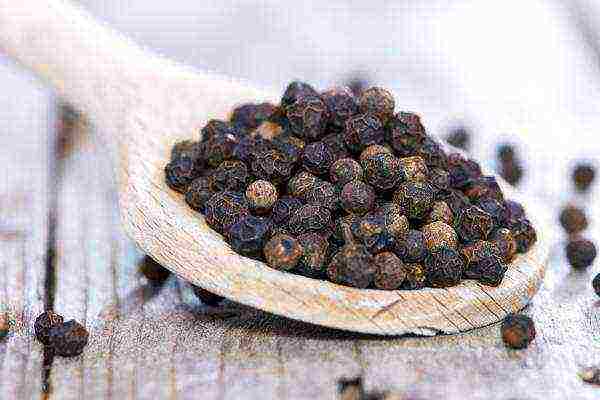 For sowing, you can purchase a bag of allspice black peppercorns
For sowing, you can purchase a bag of allspice black peppercorns
Which soil to choose
You need to plant seeds in a pot with a good drainage layer., pepper loves moisture, but with an excess of it, the plant may die.
Expanded clay, shards are used as drainage, ordinary crushed stone is excellent for creating a drainage layer. Do not forget about the holes for water drain in the bottom of the pot.
Ready-made potting mix for orchids is perfect for planting., but you can prepare the soil yourself. The following composition will be optimal:
- sand - 1 portion;
- humus - 1 portion;
- sod land - 4 servings;
- leafy ground - 2 servings.
Seeds are planted in late May and early June... They can be covered with foil or glass to create a greenhouse effect.
The planting should be systematically watered and ventilated. Seedlings appear at 3-4 weeks.
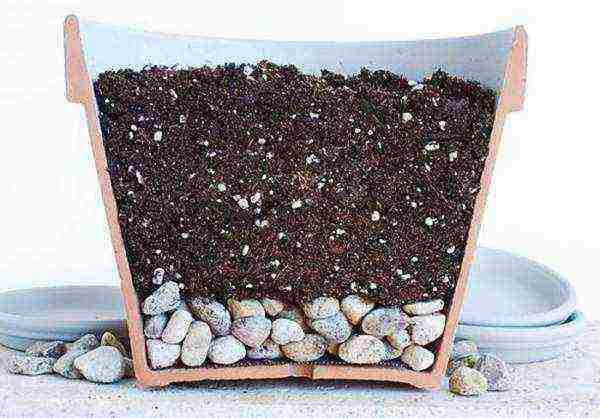 You need to plant seeds in a pot with a good drainage layer, ready-made soil for orchids is suitable
You need to plant seeds in a pot with a good drainage layer, ready-made soil for orchids is suitable
Growing and caring for the home
Watering
Pepper loves good hydration and needs abundant watering and spraying from spring to autumn... The soil in the pot should be slightly damp.
In winter, watering is reduced and water the plant twice less. If the temperature in the room in winter is within + 20 ° C, it is not necessary to spray.
Important: watering and spraying is carried out with settled water in which there is less salt and chlorine.
Top dressing
The introduction of a complex mineral fertilizer or diluted chicken manure into the soil will provide the planting with the necessary substances.
Fertilized from late April to early October, twice a month... With a sufficient content of fertilizers in the soil, the plant will please with a good appearance and active growth.
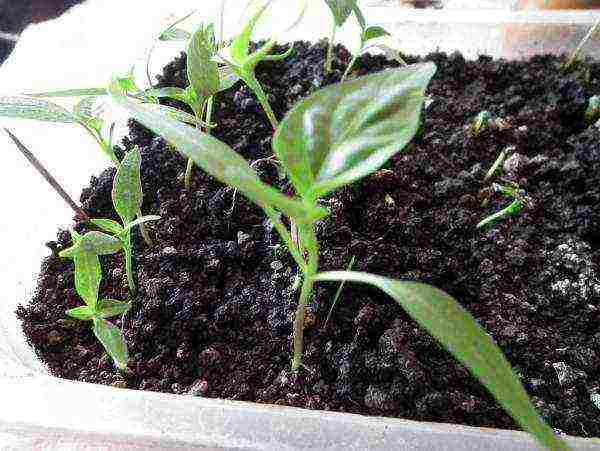 Pepper needs frequent watering, spraying, fertilization from late April to early October
Pepper needs frequent watering, spraying, fertilization from late April to early October
Transfer
It is produced every two years.... The plant is placed in a larger pot using the transfer method. Before transplanting, the soil must be moistened so as not to damage the root system.
Possible difficulties
Pepper will tell you what he needs at the moment. With a lack of sunlight the plant stretches and sheds foliage.
With insufficient humidity the tips of the leaves turn brown. Excessive waterlogging leads to yellowing of the leaves.
Direct sunlight can burn and dry foliage.
Little cultivation tricks
Since this is a vine, it is necessary to put a supportto enable the seedling to grow normally.
The appearance of white "eggs" on the back of the leaves is normal for the plant.
A green pet begins to bear fruit in the second year of life. Depending on the harvest time, you can get green, white, and, actually, black pepper.
Under good conditions of keeping pepper vine at home can reach 2 m in height.
White pepper is obtained by steeping ripe fruits for 2 weeks and then peeling and drying.
Only black peas can be used as seeds. Red, white and green seeds do not germinate.
 Begins to bear fruit in the second year of life, can reach 2 m in height
Begins to bear fruit in the second year of life, can reach 2 m in height
Beneficial features
The spice has a powerful antibacterial effect... Promotes the preservation of food, which is why it is so popular in hot Asian countries.
It is able to normalize the digestion process. Helps with colds. It is an excellent antioxidant and improves metabolism.
With a lot of useful properties, it should be remembered that pepper is contraindicated in inflammatory diseases of the gastrointestinal tract, and its excessive use can be harmful.
The program "About the Most Important" will tell you about black peppercorns:
It's easy to grow peppers at home... A little patience and careful care will allow you to get a very interesting plant at home, not only useful, but also having excellent decorative properties.
Try it, you will definitely succeed.
Table of contents:
- Growing black pepper at home
- Proper care of black pepper
- Reproduction of black pepper
- Difficulties in growing black pepper
Black pepper is massively grown in Latin American countries in the tropical zone. But if you wish, it can be grown here too.
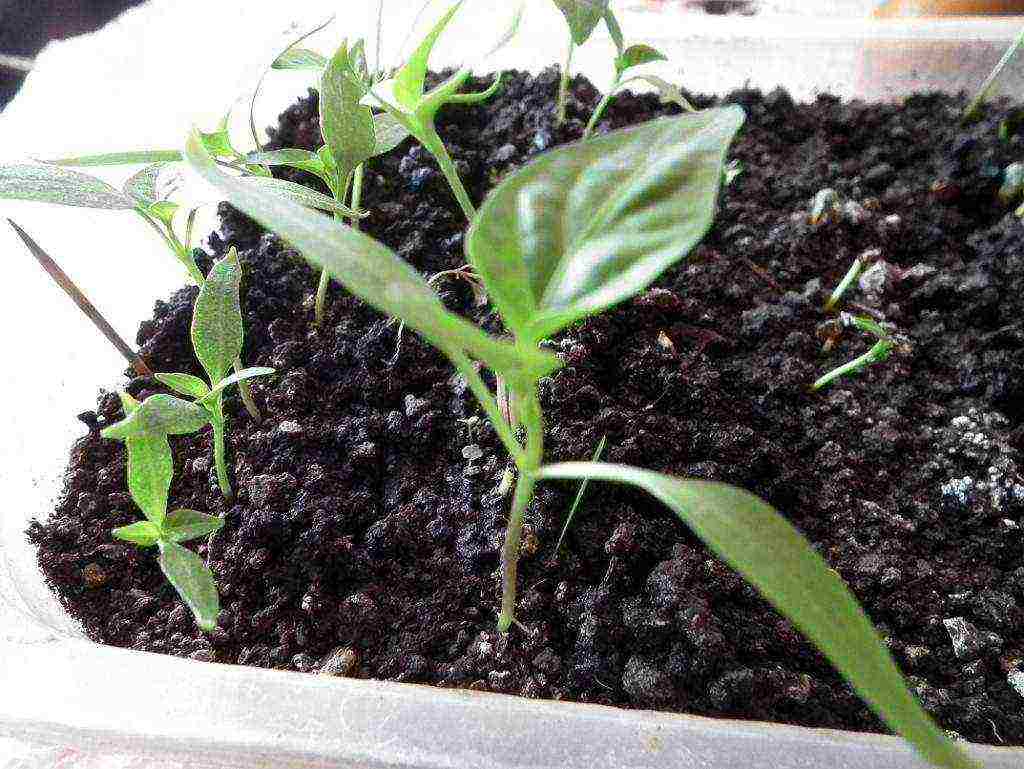
Since the time when pepper became an agricultural crop, poles have been installed for it on the plantations, as for hops, and by this its growth is limited to a height of 4-5 m.
The plant resembles a liana, as it wraps around the trees with its twigs, on which fruits grow. At first, the plant blooms, its flowers resemble hanging icicles, and then bears fruit with yellow and red fruits.
These fruits of black pepper are useful to grow and eat for people who suffer from diseases of the cardiovascular system. Also, black pepper is used to season meat and fish dishes. This is a burning plant for spicy food lovers.
In the countries of Latin America and the islands close to it, they are engaged in the cultivation of black pepper on plantations.
Black pepper is good for normal digestion. However, it should not be abused. Especially it should not be eaten by people with stomach diseases.
Pepper is widely used in the cuisine of different countries. In our country, it is used for soups, marinades, for all types of meat and sausages.
It is sold in two versions: ground and whole beans. Used as a spice to add spice and aroma to a dish.

The crop is harvested when the fruit begins to turn red.
Beneficial features:
- Black pepper has antibacterial properties. Therefore, adding it to food keeps them fresh.
- Thanks to pepper, the secretion of hydrochloric acid is enhanced and the digestion process is improved. Protects against colic, diarrhea and constipation.
- Helps overweight people to overcome kilograms. The pungent properties of pepper, when added in the right amount, can help you lose weight with the right diet. It breaks down fat cells in the body.
- Useful for skin diseases.
- For colds and coughs, black pepper should be treated. It relieves sinusitis and some diseases of the nose.
- It is an antioxidant.
- Helps to carry nutrients throughout the body.
- Helps with conditions such as hoarseness, joint pain, hernia, gangrene, ear pain, asthma, whooping cough and many others.
- It has been used for medicinal purposes since ancient times.
Contraindications for using black pepper:
- Stomach ulcer.
- Operations on the stomach and intestines.
- Consumption in large doses.
It is not difficult to grow black pepper at home.
Growing black pepper at home 
There are two main qualities of pepper - its sharpness (due to piperine) and aroma (depends on the content of essential oils).
To do this, you need to buy black peppercorns in the store. It is sold in sachets and is very inexpensive. And from this bag you can grow a good harvest. Growing, care, temperature conditions, characteristics of growth, watering and harvesting - all this you need to know when growing black pepper.
- The plant must be provided with conditions in which it will grow comfortably. The first step is to ensure the correct temperature regime. Black pepper grows at a temperature of + 25 ° C and does not like a sharp cold snap. At temperatures below + 10 ° C, the plant will die.
- A potted plant can grow up to 2 meters tall with proper care.
- Black pepper bears fruit in the second year of life.
- The soil for the plant: heavy leafy and sod land, sand and humus.
- Pepper needs light, but not direct rays.
- Watering should be abundant in summer and moderate in winter. Sprinkle black pepper with water at room temperature.
- Reproduction takes place in several ways: by layering, cuttings, division and seeds.
- Pepper blooms in April or May.
Tools you will need to grow black pepper at home:
- Peppercorns from a store bag.
- A pot or cup made of cardboard.
- Thermometer.
- Water.
- Fertilized land.
- Chopper and shovel for transplanting pepper into the ground.
- Shelter polyethylene film.
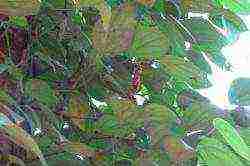
For pepper, choose a bright place, protected from direct sunlight.
Planting black pepper technology at home
- After buying black peppercorns, you need to select the largest ones and plant them in a pot.
- Before planting, they must be soaked in water for a day.
- The air temperature for growing should be + 25-30 ° C.
- It is better to plant a plant in a pot in early summer.
- After the appearance of the second leaf, it needs to be fertilized. It is best to use bird droppings for this. It must be defended in advance.
- After fertilization, black pepper should be planted in a large pot to make it roomy. The pot should be kept on the windowsill in cloudy weather, and taken out into the street in sunny weather.
Features of black pepper:
- If white eggs appear on the back of the leaves, then this is normal. They will then turn black.
- There is the so-called white pepper, which is also sold as peas. It is practically no different from black, except for the color of the shell. And this white shell is obtained by soaking the peppercorns in water. Soaked peppers stay in water for 2 weeks, and then the shell is easily peeled off and turns white. Then it is dried, after which it is ready for use. White pepper cannot be planted.
- Green peppers are also grown. It is obtained from the unripe black fruit. After drying, its color remains green. Red is obtained in the same way. But pink is already a separate variety of Brazilian pepper.
- Only black pepper is suitable for planting, and green, white and red peppers cannot be planted.
Back to the table of contents
Proper care of black pepper
- The plant grows on a window, and therefore you need to place it so that there is enough light. Best of all on the east or west side, because there is little light on the north side, and on the south it can burn out.
- During the growing season, the temperature should be about 20-22 degrees, and in winter, the temperature should be reduced to + 18 ° C. It is not advisable to reduce it below 16 ° C.
- The plant loves moisture, therefore, if the heating is constantly on, it can dry out the air, while the plant will hurt. It needs to be sprayed 2 times a day with water. In winter, this should be done less often than in summer. In the summer you need to water abundantly. You can pour water or peat on a tray with a pot.
- In summer and spring, the plant is fed with mineral fertilizers.
- In winter, the plant is dormant. It is better not to disturb him, to water so as not to overdo it. Leave it in a bright place.
- Peppers are transplanted every two years. It is better to take plastic pots, they retain moisture more.
Back to the table of contents
Reproduction of black pepper 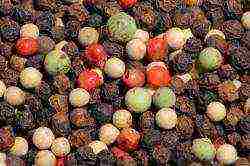
Black pepper aids digestion, and the Romans consumed large quantities of it. But this cannot be recommended. However, in the quantities in which it is used in our kitchen, it does not pose any harm to health.
Reproduction of pepper by seeds:
- The substrate is being prepared: leafy earth, sod land, sand.
- Maintaining temperature + 24-28 ° C.
- Abundant watering.
- When the first leaf appears, a pick is carried out.
- Transplanted into pots with soil.
- Composition of the land: leafy and sod land, humus and sand.
- The pot is placed in a bright place, but when the root begins to grow, it is transplanted into a larger pot.
- When the plant begins to grow, it is better to support it with a support that needs to be installed in the pot, since the plant will lie on the surface of the ground.
Propagation using cuttings:
- Cuttings are cut with two buds and put in a box or small warm greenhouse.
- The air temperature should be + 26 ° C.
- Substrate: leafy earth and sand.
- In three weeks, the cuttings will take root and can be planted in pots 9 cm high.
- The composition of the soil for the pots: leafy earth, humus, turf and sand. All in equal parts.
The division of the bushes occurs in the spring when transplanting. The composition of the soil is the same as when planting by cuttings.
Reproduction by layering:
- Long shoots bend tightly to the sand.
- Good watering and light promotes root formation at the bending points.
- When the roots take root, the plants are separated and transplanted into pots.
Back to the table of contents
Difficulties in growing black pepper
- Lack of light and nutrients leads to the exposure and elongation of the plant. In this case, the plant ceases to bear fruit.
- Lack of substrate moisture and air leads to the fact that the ends of the leaves turn brown.
- Leaves turn yellow with excess moisture. It is dangerous in winter. Chlorosis can develop in the soil.
- With an excess of light, the plant dries up.
Black pepper is firmly established in the kitchen of any housewife. No wonder he is called "the king of spices." Shriveled little black peas or dark gray powder with a greenish tint - this is what the world's most popular spice looks like. It is interesting that in the era of antiquity, black pepper served not only as a spice, medicine and analogue of money, but also as an equivalent for weighing pharmaceutical powders, since it was required to measure doses with great accuracy. Translated into modern weights, 1000 premium black peppercorns should have a mass equal to 460 grams - no more, no less.
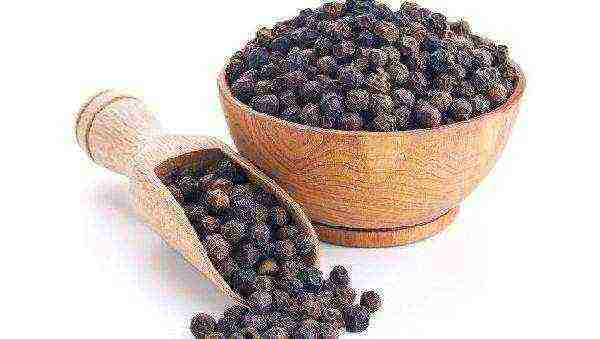
Black pepper - (PIPER NIGRUM) or as it is also called, the Malabar berry is a tree-like vine with aerial roots formed at the nodes, from the pepper family. All of us beloved bell peppers and chili peppers are not relatives of the "king". The pepper vine grows in the forest, twining around the trees that support it. The length of a wild liana can reach from 6 to 15 meters. But on plantations, its growth is inhibited, and special supports in the form of poles are used as supports, just like for cucumbers.

Liana has ovoid leathery grayish-green leaves. It blooms with small white flowers gathered in hanging ears. After the end of flowering, fruits are formed. Pepper fruits are spherical drupes with a hard shell and have a burning taste, and at first they are green, then turn red. The crop is harvested when the fruit begins to turn red. When dried in the sun, the peas turn black. Interestingly, the pepper vine is capable of bearing fruit twice a year for 25-50 years.
The homeland of black pepper is the Malaber coast of India. Black pepper is grown in Indonesia, Brazil and other countries with a subtropical climate. Our cold climate, of course, does not suit him, but I wanted to experiment.
From personal cultivation experience
Seed material could not be found in specialized stores, of course. An ordinary supermarket helped - fortunately, at present, black peppercorns are not a shortage in our country. I bought a bag, selected the largest and most beautiful peas, soaked them for a day in warm water with aloe and put them in a pot. Planting depth - 1 cm. Covered the ground with a plastic cup, periodically ventilated, lightly sprayed. The seeds "thought" for a long time, shoots appeared almost a month later.
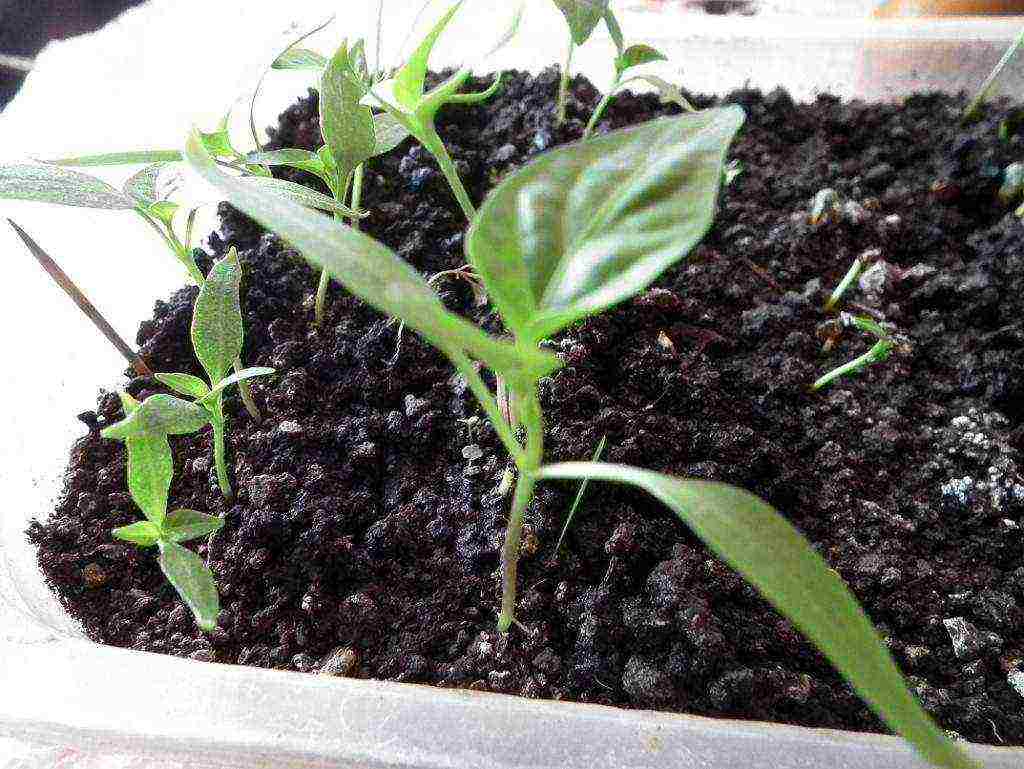
Of the seven peas, only five sprouted.
The first conclusion: the seeds are fresh, because have not lost their germination and peppercorns do not undergo heat treatment, as they write, that is, they were dried in natural conditions. But this is, so to speak, collateral. although positive, the result of the experiment. The negative one was that in the literature it is recommended to plant black pepper at the beginning of summer, but I learned this after planting, and the calendar was November.
However, the seedlings looked vigorous. When the second leaves appeared, I carefully transplanted them into separate pots. 10 days after the transplant, I slightly fed. Now my task was to create such conditions that the peppers would feel comfortable. At first they were under the lamp. It was also necessary to ensure the temperature regime. Black pepper feels great at a temperature of + 25C, does not like a sharp cold snap, and at temperatures below + 10C, the plant dies. Pepper loves moisture. Water should be plentiful in summer, moderate in winter. Sprinkle the pepper with water at room temperature. In winter, when the heating is turned on, there is a threat of overdrying the air. I sprayed my "babies" twice a day.
The seedlings spent the summer in the garden in the greenhouse, they got stronger, grew well. She covered her from direct sunlight. The young plants tolerated the autumn transplantation well. I installed a support in each pot, otherwise the plant will lie on the surface of the earth.
In spring and summer, I feed black pepper with complex mineral fertilizers. In winter, the plants are dormant, it is better not to disturb them, water them carefully so as not to overdo it. Now that the peppers have matured, they winter on the eastern window, where I try to keep the temperature at least + 18C. Surely more light would be nice. It is recommended to transplant peppers every two years, this must be done carefully, it is preferable to use plastic pots, because moisture is better retained in them. Good drainage is essential. The soil for plants needs nutritious, loose, consisting of equal parts of leaf, humus and sod land, peat, sand.
Black pepper begins to bear fruit in the second year. Blooms in April or May. I hope that this year the "king of spices" will delight me with his flowering and Malabar berries.
As a bonus, a video about growing pepper at home:

Table of contents:
- Growing black pepper at home
- Further care of the plant
- Preparation of soil constituents
- Reproduction of black pepper and errors that are possible when cultivating a plant
- Errors in growing pepper
- Encyclopedic data on black pepper
- The usefulness of pepper
- Black pepper in folk medicine
Black pepper, ground (Fig. 1) or peas (Fig. 2), is one of the most widely used and favorite spices, which is added to almost all dishes, fillings, minced meat, salads. It is impossible to imagine pickled vegetables, mushrooms, spicy salted fish, sausage without pepper. And in the Baltic countries, it is even added to some types of cookies. Season the dish with black pepper at the end of cooking, otherwise, if you cook the pepper for a long time, the food will become unnecessarily bitter.

Rice. 1. Black pepper can be used to season almost all main dishes.
Spice must be stored in sealed containers and containers, otherwise it will quickly lose its aroma and beneficial properties. The fresher the peas, the better they are. And to test this, you can grow a plant right at home or in the office, while getting the freshest fruits.
Growing black pepper at home
Growing pepper is a process that can be successfully done on your own at home.

Rice. 2. Black peppercorns are used to season various marinades.
All you need is desire and a minimum of effort (Fig. 3). There will be no problems with the seeds: they buy a pack of black peppercorns in the nearest grocery store, choose the largest peas, soak them in water for a day and plant them in a pot. The most suitable planting time is early summer. The first shoots will appear in about a month. The optimum temperature for germination is 25-30 ° C. The composition of the soil when sowing: leafy soil (1 part), sod land (0.5 parts), sand (0.5 parts). The main care consists in watering and maintaining a temperature of 24-28 ° C. After the germinated plants get stronger, and the first true leaf is fully developed, a pick is made in a dish at a distance of 2 × 3 cm, then 1 piece is transplanted into pots with a diameter of 7 cm. below).
When the second leaf appears, it is necessary to fertilize the sprouts with a solution of bird droppings that has settled for several days, in its absence - with store-bought fertilizer for decorative leafy plants. When the root system grows, the plants are transplanted into 9-centimeter pots. Black pepper is a vine, so the plant will need support.
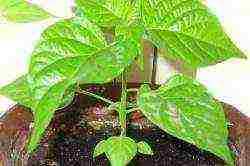
Rice. 3. Black pepper is grown in large pots and taken outside in sunny weather.
Do not be afraid of the formations on the back of the leaf, which resemble white eggs. In the future, they become black - these are the characteristics of the plant.
It is impossible to grow peppers from white, green or pink peas. This is the same black pepper, but dried using a different technology.If black is simply air-dried, then white, after preliminary soaking for about one week in water (usually hot to speed up the process), is mechanically cleaned from the pericarp, and only after that it is dried.
Green pepper is obtained from the unripe fruit of black pepper by freeze-drying (gentle drying of the frozen product in a vacuum) or using sulfur dioxide. Pink (red) pepper is obtained in a similar way (Fig. 4). It is necessary to distinguish pink pepper from black pepper from pink pepper, which is made from the fruit of the Brazilian (Fig. 5) or Peruvian (Fig. 6) peppers.
Back to the table of contents
Further care of the plant

The scheme of growing pepper by the hydroponic method.
- To grow peppers, you need diffused sunlight. To do this, it is optimal to place pots with plants on the west or east window. The plant on the south window should be shaded from direct sunlight. On northern windows, peppers may experience a lack of light.
- In the stage of active growth, peppers need an air temperature of about 20-25 ° C, in autumn you can slightly lower the temperature, while in winter, a temperature of 16-18 ° C is recommended.
- In the summer, the plant is watered abundantly with soft, settled water, as the topsoil dries. In autumn, watering is reduced, and in winter, it is watered very moderately. Overmoistening, like overdrying, is very harmful to the plant.
- Pepper needs high humidity of the ambient air. This must be taken into account when growing a plant: if the humidity is low, the plant begins to ache. To prevent this, pepper is sprayed with soft, settled water twice a day. You can also place the pot on a pallet that is filled with wet peat or expanded clay.
- Further cultivation of pepper consists in regular fertilization and transplantation. The plant is fed with mineral complex fertilizers for decorative deciduous plants once every two weeks. In the autumn-winter period, black pepper is not fed (the plant is in the dormant stage).
- A young plant needs to be replanted once a year, and an adult - once every two years, preferably in spring. For black pepper, soil mixture No. 2 is suitable: turf soil (1 part), leafy earth (1 part), humus (1 part), peat (1 part), sand (1 part). Good drainage is laid at the bottom of the pot.
Back to the table of contents
Preparation of soil constituents
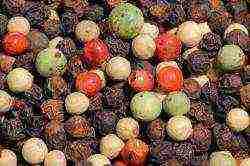
Rice. 4. Pink pepper is used to decorate meat dishes, salads and desserts.
You can, of course, buy ready-made soil mix in the store. But the purchased product is not always of high quality, and sometimes you can run into an outright fake, which not only will not correspond to the declared qualitative and quantitative composition, but even contain pests.
A very good option is to prepare the soil yourself, and if there is a greenhouse and flower farm, then this is just a life choice.
- Sod land is prepared from sod, which is cut in fields and meadows. Layers of sod are stacked on top of each other, alternating with manure (if possible). After 2 years, the necessary soil is formed (pH 7-7.5).
- Leafy soil is prepared from fallen leaves of trees, except for oak and chestnut. In autumn, fallen leaves are placed in heaps, periodically watered and shoveled. After 2 years, the leafy ground is ready (pH 5-6).
- Humus - rotten manure (pH about 8).
- Ready-made peat is bought in stores.
- Well washed river sand is used.
Drainage at the bottom of the pot is done as follows: a shard is placed on top of the drainage hole with the convex side upwards and broken shards, expanded clay, pebbles, coarse wet sand are poured in a layer of 2-3 cm.
The nutritional value of the mixture is increased by adding 5 g per 10 kg of bone and blood meal substrate.
Back to the table of contents
Reproduction of black pepper and errors that are possible when cultivating a plant
Reproduction is carried out both by seeds and cuttings, layering, dividing:

Rice. five.Brazilian peppers can be used for pickling, but within reasonable limits. in large quantities it is toxic.
- Seed propagation is discussed above in the text.
- Propagation by cuttings: the latter are cut from an adult plant with 1-2 buds, placed in a mini-greenhouse, a distribution box for rooting, temperature 24-26 ° C. Soil composition: sheet earth (0.5 parts), sand (1 part). Rooting takes place over 3 weeks; then the cuttings are planted 1 piece in pots with a diameter of 9 cm. The composition of the earthen mixture: turf and leaf soil, peat, humus and sand in equal amounts.
- Reproduction technology by layering: long lying shoots in selected places are attached to the soil surface with wooden pins. With sufficient light and humidity in a warm place, they take root quickly enough. Then the rooted shoots are cut off and planted in pots.
- The division of the bushes, if desired, can be done when transplanting black pepper.
Back to the table of contents
Errors in growing pepper
- with a lack of nutrition and lighting, black pepper is prone to exposing the stems and pulling them out;
- with insufficient moisture in the soil and air, the ends of the leaves turn brown;
- wilting and yellowing of leaves, most likely, occurs when the soil is waterlogged; Especially during the dormant period in winter. With an insufficient amount of essential nutrients in the soil, yellowing of the foliage also occurs;
- growing pepper in direct sunlight on the southern windows leads to the fact that the leaves become faded, fade.
Back to the table of contents
Encyclopedic data on black pepper 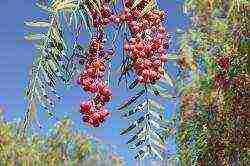
Rice. 6. Infusion of Peruvian pepper is used as a flavoring for a variety of drinks.
Black pepper (Piper nigrum L.) is a Malabar berry, a tree-like vine that belongs to the pepper family. The pepper grows in the forest, twining around the trees that serve as its support. The liana grows in length up to 6 m. On the plantations where the plant is cultivated, wooden poles are used as supports (as when growing hops) or trees are specially planted.
Leaves are leathery, ovoid, grayish-green, 8-10 cm long. Black pepper blooms with small white flowers collected in hanging ears. After flowering, round fruits (drupes of a spherical shape with a burning taste) grow, first green, and then yellow or red.
The cultivation of pepper on an industrial level takes place in Sumatra (the main supplier of spices to the world market), Java, Sri Lanka, Borneo, and South American countries.
Back to the table of contents
The usefulness of pepper
Pepper is rich in vitamins C, E, essential oils, glycosides, starch. Thanks to these ingredients, black pepper is used as a remedy for strengthening the nervous system, helping to build muscle mass and improving digestion. Pepper is also capable of thinning blood and lymph. It stimulates appetite, promotes salivation and cleansing of the body, has an antidote effect. The plant is used to improve memory, strengthen the organs of the gastrointestinal tract.
Back to the table of contents
Black pepper in folk medicine
For bronchitis, sore throat, take 1 teaspoon of ground black pepper and mix it with a glass of honey. Take 1 teaspoon three times a day. This same medicine can also help with delayed periods.
With kidney stones, take black grapes, remove seeds from it, place one pepper at a time instead. Take one cooked grape daily for 7 days. Kidney stones are crushed and removed from the body.
For sciatica, osteochondrosis, paralysis, aches, take 1 tablespoon of ground pepper and mix with 200 ml of olive oil. We put on fire for 10 minutes. After filtering, sore spots are rubbed with medicine.
Hair fortifying agent: mix equal amounts of ground black pepper and salt, add onion juice until a gruel is obtained. The finished balm is rubbed into the scalp and rubbed with it on the hair, left for half an hour. Then the gruel is washed off the head.

